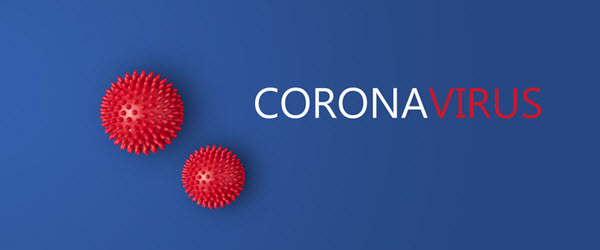Now after a 50-year absence these unpleasant pests have made a comeback. They are commonly carried in clothing, language or furniture and the more traffic a facility has the greater the potential for a problem.

I’m sure most of you have heard the phrase “don’t let the bed bugs bite.”
Bedbugs (Hemiptera Cimicidae) were a common problem prior to World War II and the widespread use of high residual pesticides such as DDT made them extinct in North America. Now after a 50-year absence these unpleasant pests have made a comeback. They are commonly carried in clothing, language or furniture and the more traffic a facility has the greater the potential for a problem.
Bed bugs feed on human blood. Although they are not known to spread disease, their damage to your reputation can have a cost beyond counting. Because these pests can be difficult to control, experienced, expert help is a necessity.
If you see any of the following bed bug warning signs, be sure to contact (860) 878-9128 to do a free pest evaluation of your property.
Bed Bug Biology and Identification
Bed bugs are ectoparasites and exclusively feed on the blood of humans. These insects live in cracks and voids near areas frequented by people, usually in bedrooms or other sites where a person might sit or rest for long periods of time. The most severe infestations occur in rooms with poor sanitation but bed bugs can infest any building or home.

-
Adult bed bugs are reddish in color, oval in shape, their bodies are flattened and 3/16 to 3/8 inch long.
-
Their flat shape enables them to hide in cracks and crevices and easily crawl under wall sections into adjacent rooms.
-
Bed bugs prefer temperatures of 70oF to 82oF with a higher humidity for optimum development.
-
They typically live 6 to 7 months and sometimes longer without feeding.
-
Blood meals are taken from people usually as they sleep or rest for long periods.
-
Like a mosquito, a bed bug’s body will becomes more elongated, swollen, and dark red after a blood meal.
-
Bed bug activity occurs primarily at night and they can forage over 100’ from their harborage in a single evening.
Bed Bug Eggs and Nymphs


-
A single female can lay as many as 5 eggs each day and deposit 200 to 500 eggs in her lifetime.
-
The eggs are extremely tiny (1mm), white and pear-shaped.
-
Females use a cement-like secretion to attach eggs in protected areas such as the seams of mattresses, small cracks and crevices, behind woodwork, along baseboards, among carpet fibers, and within nearby furniture where the adults may hide during the day.
-
Eggs take 6 to 10 days to hatch and can mature into an adults in as few as 35 days under favorable conditions.
-
The tiny nymphs are about the size of the letter “O” on a penny and are often overlooked during an inspection contributing to the persistence of infestations.
Bed Bug Life Cycle

Bed Bug Bites

-
Bed bug bites are relatively painless but may result in reddish, raised areas on the skin. Some individuals are more sensitive to bed bugs bites than others.
-
Bed bugs are not known to spread disease but their damage to your reputation can have a cost beyond counting.
Bed Bug Habits

-
Bed bugs are fast moving insects that primarily feed at night when their human host is asleep or inactive.
-
After using their sharp beak to pierce the victim’s skin they inject an anticoagulant very much like a mosquito.
-
Bed Bugs seem to prefer to rest on fabric, wood or paper and usually hide in close proximity to where the host spends long periods time.
-
In heavier infestations, bed bugs may hide in places further from the bed and may be seen during the day.
-
Bed bugs can travel as far as 100’ in one night an can easily infest adjacent rooms.

Tell-tail Signs of an Infestation
-
Signs of infestation include bloodstain fecal smears (rusty or dark red spots) left by the bed bugs on beds, walls, curtains and other surfaces. These fecal smears are similar to those left by cockroaches.
-
In the early stages of an infestation, bed bugs hide in cracks, seems and folds of mattresses, bedding, upholstery, and the bed frame or furniture. Picture frames, peeling wallpaper, even ceiling fixtures, can serve as a harborage.
-
As the population increases, bed bugs move out into the rest of the room, harboring behind doorframes, window frames, molding under the edges of carpets and rugs, and inside walls.
-
Bed bugs may crawl under baseboards and wall studs or follow pipes and wires inside walls into adjacent rooms or units.
-
Seriously infested rooms may develop an offensive, sweet, musky odor.
-
Mattress Seams Must Be Carefully Examined.

-
Bed bugs were found under the cloth covering of the box spring at each point indicated by an arrow.

-
Bed bug fecal smears (rusty or dark red spots) were found on the mattress and box spring.
-
Bed bugs can often be found behind headboards and in nightstands.
Education and Cooperation
In Hotels, especially, the facility’s staff plays a critical role in successful bed bug control and elimination. Housekeeping and maintenance personnel should be trained to recognize signs of bed bug activity and instructed to notify management immediately.

-
Daily service of rooms gives your staff excellent opportunities to discover infestations before they get out of control. Housekeeping should check the: sheets, mattress seams, mattress covers, box spring seams, headboards, wall hangings, upholstered furniture, baseboards and moldings.
-
Inspect used furniture carefully before bringing into a building.
-
Be diligent about room upkeep: Repair of wall cracks, peeling wallpaper and leaks will reduce the probability of getting insect infestations in general.
-
Your facility should maintain a “pest sighting log” and bring a potential bed bug infestation to your managers attention immediately.
-
Save a specimen by trapping it in a glass or plastic bag if possible.
-
If you have a potential bed bug sighting please contact Donald Dodd at (860) 878-9128 for a free pest inspection.
And if bed bugs are found…
-
Isolate any linen including pillows by sealing them in plastic bags. Sheets and other bedding can be laundered with soap and HOT water separately from non-infested linens. Items that cannot be washed should be dried in the dryer at high temperature for an hour.
-
Guests or long-term occupants of hotel rooms or apartments may request to be moved to another unit. Such persons should be alerted to the fact that bed bugs could hitchhike in their belongings to the new room, especially if luggage or furniture is transferred.
-
Prior to moving anything to another room, belongings should be carefully inspected and treated by a trained pest control professional.
-
In some cases involving chronic or severe bed bug infestations, mattresses and box springs should be discarded outdoors.
-
Dragging infested furniture through a hallway can result in bedbugs jumping off during transit. All items to be removed from the building should be wrapped in plastic before removal.
-
I also recommend damaging discarded furniture in some manner prior to disposal to help prevent recycling and the further spread of the infestation.
Pest Control Preparation Guidelines
Because bed bugs can hide in the tiniest of cracks and crevices it is necessary to have the beds dismantled and furniture accessible to enable your pest control professional to effectively service all areas where bed bugs may be hiding. Your staff’s cooperation is necessary to help ensure the successful treatment of this tenacious parasite.
-
All sheets and bedding materials including pillows should be removed from beds and sealed in plastic trash bags until they can be washed and or dried as described above.
-
Drapes and other delicate items should also be sealed in trash bags and dried in a dryer at high temperature for at least an hour.
-
The mattress, box spring and bed frame should be dismantled and leaned against the wall to allow access for thorough inspection and treatment.
-
Furniture should be moved 18 inches away from walls to allow access for inspection and treatment.
-
The mattresses, furniture, carpeting and floor should be thoroughly vacuumed with added emphasis to cleaning the baseboards using a crack and crevice attachment. The vacuum bag should be disposed of immediately in a sealed plastic bag and placed in an outside trash receptacle.
-
Aquariums should have the air pumps disconnected and the top covered by a towel.
-
Birds, dogs, cats and other pets should be taken to another location until after the treatment and it is safe to return.
-
Following the service, you should be prepared to be out of your home or apartment for a period of time long enough for any treatments to dry. This typically takes 2 to 4 hours.
All of the effort you and your staff put into preparation is a critical component of the eradication of bed bugs. Cluttered environments such as apartments or homes are especially difficult to treat and it may take 4 weeks or longer to gain effective control of the infestation.






